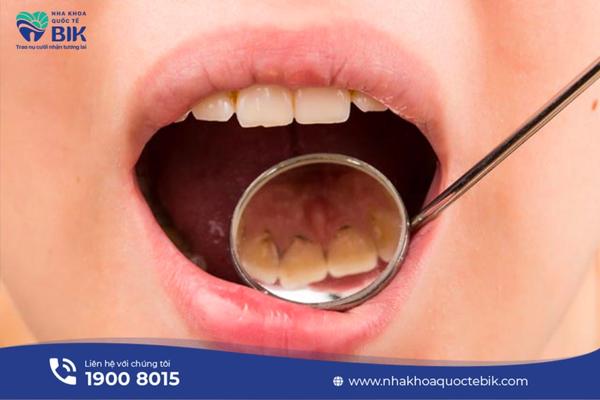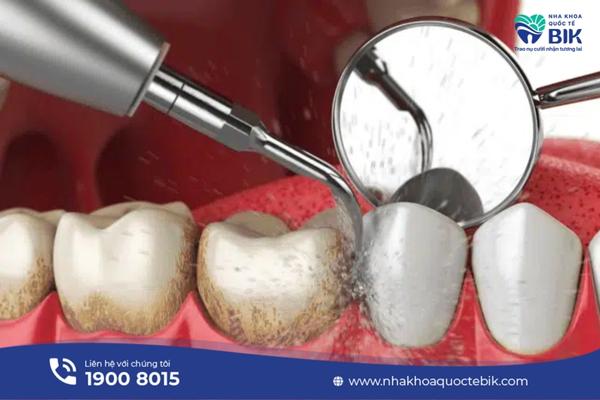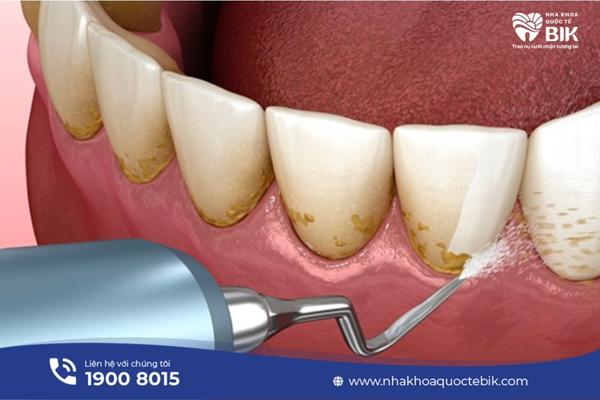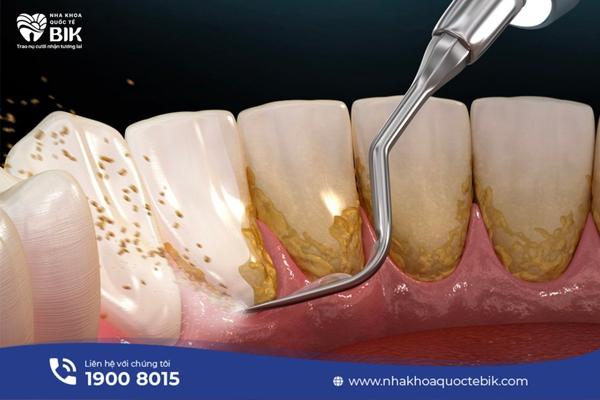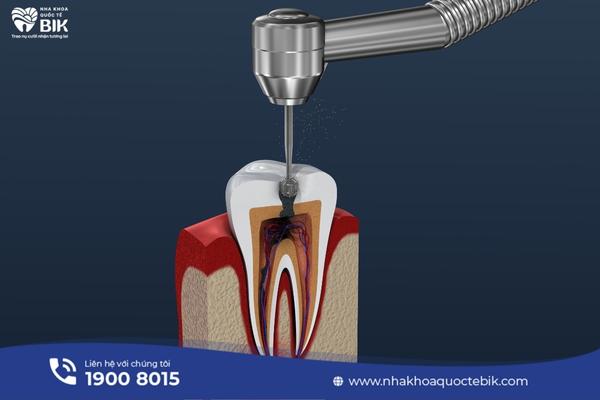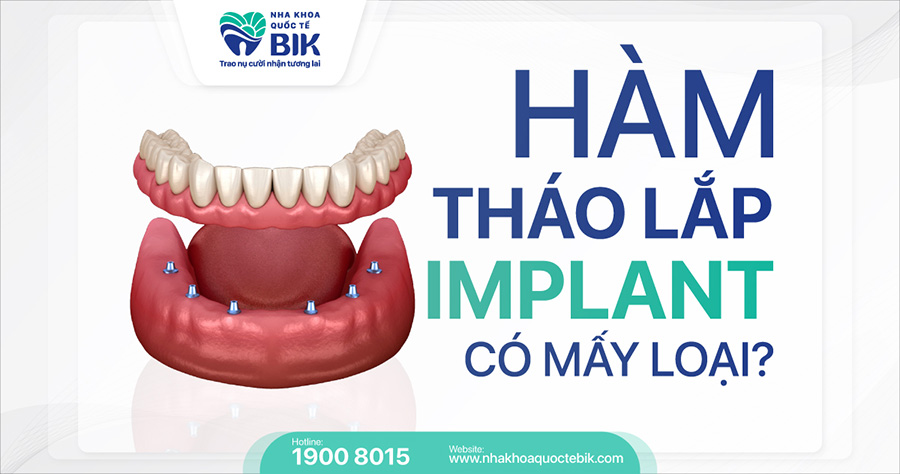
Dental restoration with a removable denture on an implant is a combination of traditional methods and modern implant technology. This is the optimal solution to help customers save a lot of money while still owning even, beautiful teeth and restoring maximum chewing ability.
1. What is a removable denture on an implant?
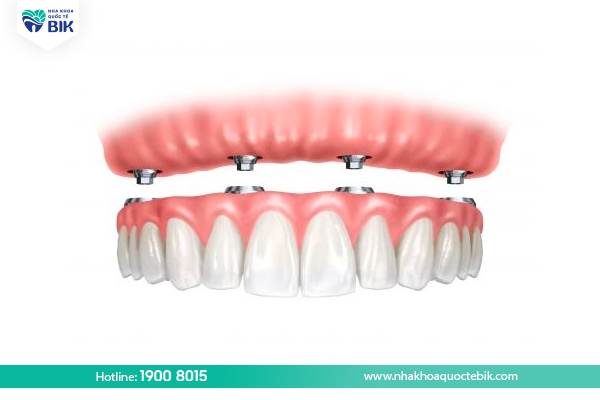
A removable denture on an implant is a type of removable denture that is supported and secured by locks connected to the implant post.
While the traditional method of attaching removable dentures has many disadvantages such as looseness and easy falling off, making chewing ability not guaranteed, the removable denture on an implant will be more secure.
The reason is because the doctor will implant at least 2 implant posts deep into the jawbone to create a support point for the removable denture. The jaw and the implant will be connected together through ball or bar locks.
The implant is made entirely of Titanium material that has been tested to be completely safe, benign and does not cause any irritation that affects overall health during use.
2. How many types of removable jaws on implants are there?
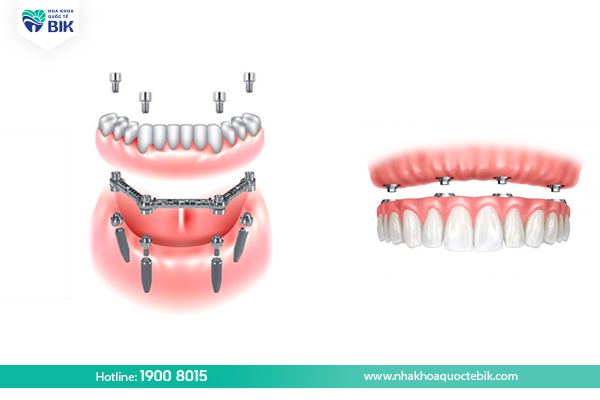
There are 2 commonly used types of removable dentures on implants as follows:
2.1. Removable dentures on implants without bars
Removable dentures on implants without bars are also known as ball locks. With this type, each implant placed in the jawbone will be attached to a ball-shaped lock and fit into a socket on the denture.
2.2. Bar-type removable dentures on implants
Bar-type removable dentures on implants are less commonly used and are used for All On 4 or All On 6 dental implants. This type is done by placing more than 2 implants into the jawbone, then connecting a bar with a metal fixing bar. The overdenture will be fitted tightly over the connecting bar and held in place with locks.
3. Implant-based removable dentures process
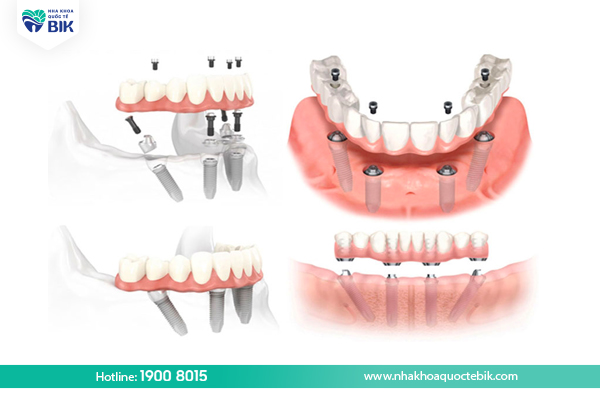
The procedure for making removable dentures on Implants includes 3 basic steps as follows:
3.1. General examination
First, the doctor will conduct a general examination to determine the oral health status as well as the overall health of the customer. After that, the customer will have a full-mouth CT scan so that the doctor can clearly understand the tooth loss condition, from which an accurate treatment plan can be made.
3.2. Implant placement
Based on the previous treatment plan, the doctor will perform jawbone drilling surgery and place at least 2 Implant posts into the jawbone. The doctor needs to place the posts in the correct direction, tilt, and depth so that the posts can integrate with the jawbone.
While waiting to make a removable denture on the Implant based on the previously taken tooth model, the doctor will attach a temporary denture. This helps ensure the aesthetics as well as the customer’s chewing ability for a few days.
3.3. Trying on and attaching the overdenture
After about 3 – 6 months, when the Implant has integrated stably into the jawbone, the doctor will take oil from the Implants to pre-fabricate the bars if the patient chooses the overdenture on the bar.
Before attaching the real denture, the doctor will try on a wax denture first. If everything is comfortable and stable, the trial denture will be converted to a plastic denture. The ball or connecting bar will then be attached to the top of the Implants to hold the overdenture in place as desired.
4. Advantages of making removable dentures on Implants
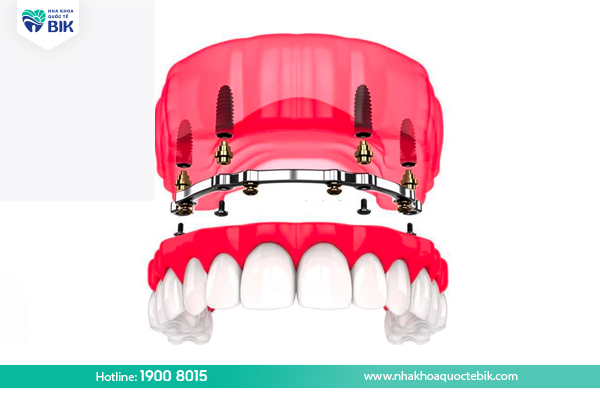
As a combination of traditional removable dentures and modern Implant technology, Implant-supported dentures have many outstanding advantages:
– Firm and stable because the Implant is inserted deep into the jawbone. Thanks to that, customers can comfortably eat any food without worrying about teeth falling out, breaking, or cracking.
– The aesthetics are similar to real teeth, more natural than traditional removable dentures because they use less fake gums.
– The lifespan of removable dentures on implants is quite high, up to 20 years if performed by a highly skilled doctor and carefully cared for.
– Prevents jaw bone loss caused by long-term tooth loss.
5. Limitations when using removable dentures on Implants
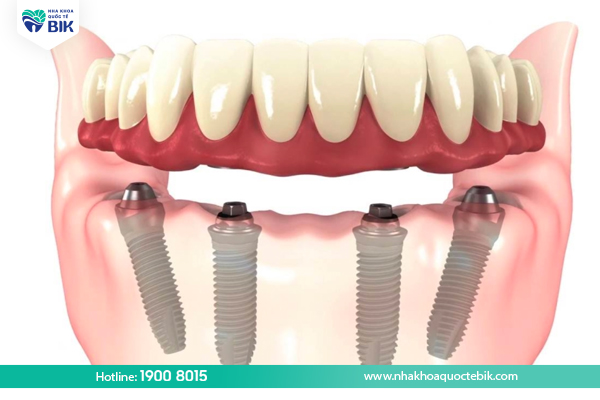
However, dentures on Implants also have certain limitations:
– The cost is higher than traditional removable dentures.
– Accessories need to be replaced periodically to ensure stability.
– Reduced sensation when chewing because food cannot contact the mucosa due to obstruction by the jaw base.
6. Notes when using removable dentures on Implants
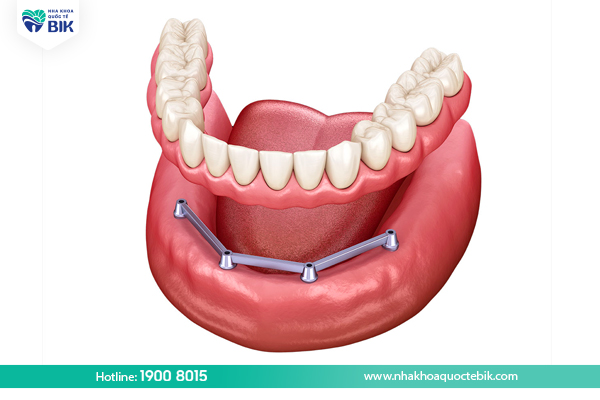
To make removable dentures on Implants, the prerequisite is that the patient’s jawbone must have sufficient density and strength. In case of bone loss, the doctor will prescribe sinus lift and bone grafting to ensure the best results after tooth restoration.
Implant placement is a complex dental technique, so customers should choose to perform it at a reputable dental address, with a team of highly skilled doctors and many years of experience in the profession.
After implant placement, patients should have a scientific diet and practice proper oral hygiene according to the doctor’s instructions so that the bone integration process takes place more quickly, avoiding the situation where the implant is rejected from the jaw bone.
Note that you should have regular dental check-ups so that the doctor can monitor the condition of the teeth after the denture is installed, thereby promptly correcting some unwanted problems.
So making removable dentures on Implants is a method that combines Traditional and modern technology help customers save a lot of money but still have even, beautiful teeth and restore effective chewing ability. To know if you are qualified to have dentures on Implants, customers should go to a reputable dental clinic for a specific examination and consultation.


